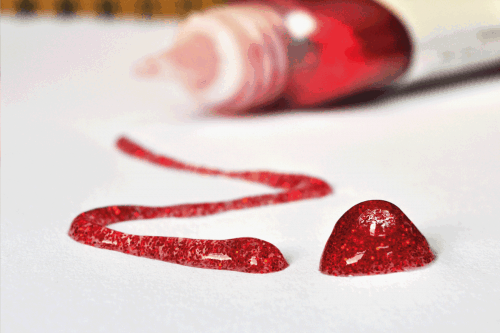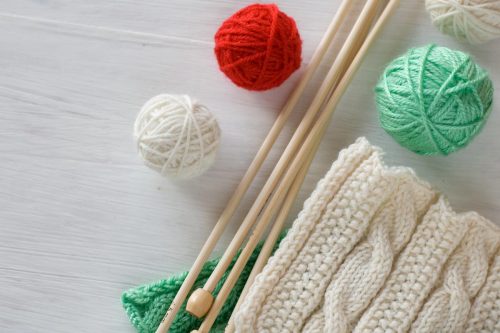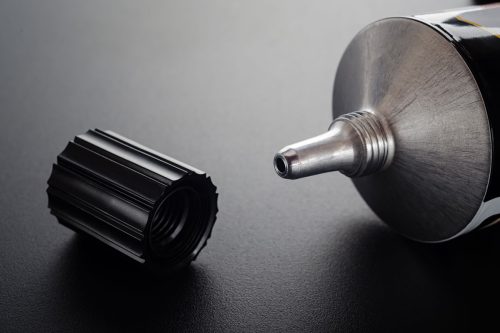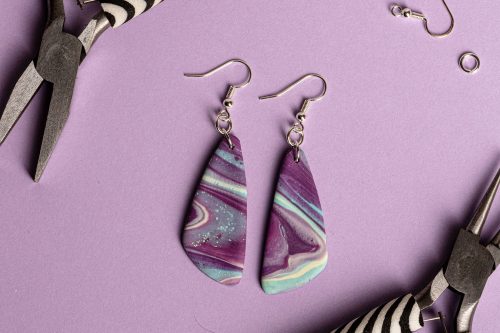Have you reached the baking portion of your polymer clay project just to find fingerprints plastered on it? This can be frustrating for any crafter.
Whether you are making a gift for a friend or an item to bring some customization to your home, we all enjoy a perfect finish. How can you get this smooth finish free of fingerprints, scratches, and other blemishes? We created this step-by-step guide to removing fingerprints from polymer clay.
To remove fingerprints from polymer clay, follow these steps:
- Inspect your project for fingerprints before baking.
- Apply rubbing alcohol to a cotton swab.
- Use the cotton swab to lightly wipe away fingerprints.
- Smooth the surface of your clay.
We have laid out the basic steps to removing fingerprints on your project, and we will go on to explain each step in depth. Keep reading as we discuss methods for sealing polymer clay and how to buff clay by hand.
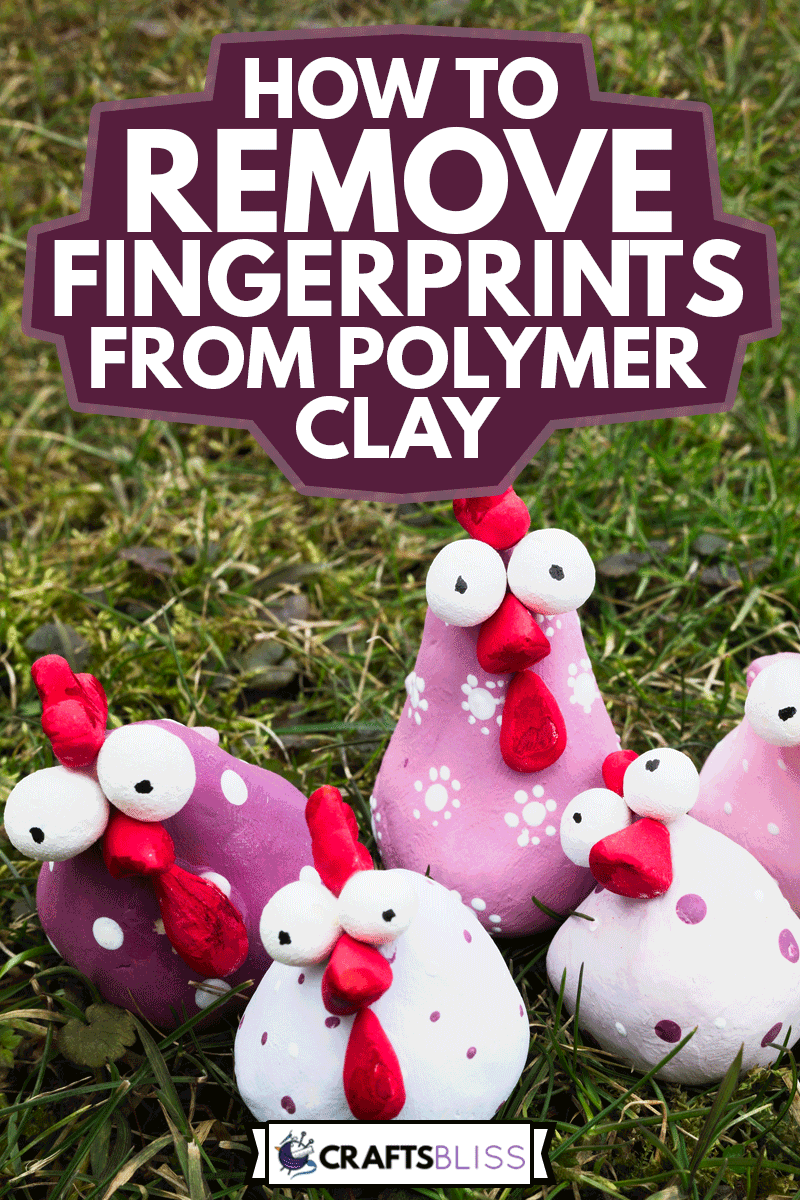
Contents
How To Remove Fingerprints From Polymer Clay
To save you additional work, preventing fingerprints in the first place is ideal, but not always the case. Crafters work with their hands, and that includes their fingers.
Polymer clay is soft and impressionable before it bakes, so it is no surprise to find a fingerprint, or a couple, plastered on your project. Let's break down how to rid fingerprints from polymer clay.

1. Inspect Your Project For Fingerprints Before Baking
Removing fingerprints from polymer clay is much easier to do before baking. This is why it is important to thoroughly inspect your project before placing it in your baking device.
In some cases, you may want to add a clay piece where the fingerprint lies, and if not, you can focus on removing the prints and smudges.
2. Apply Rubbing Alcohol To A Cotton Swab
This method calls for the use of rubbing alcohol. Ideally, you want to use a stronger solution, like 91% isopropyl alcohol. Simply add a few drops of the solution to your cotton swab, or dip the cotton tip into the alcohol to moisten it.
3. Use Your Cotton Swab To Wipe Away Fingerprints
With your cotton swab moistened, gently dab or wipe away fingerprints that are present on your polymer clay. To avoid smudged patterns, use a new cotton swab if you move on to a new polymer clay color within your project.
4. Smooth The Surface Of Your Clay
Once the fingerprints have been successfully removed, you will need to smooth the surface of your polymer clay before baking. One method of smoothing the surface of your clay is by applying a small amount of baby powder to the area in a circular motion. We will talk about more methods for smoothing out polymer clay below.
You can find a small bottle of baby powder here on Amazon.
Read more on our blog post, “Can You Use Clear Nail Polish On Polymer Clay?”
How Do You Smooth Out Polymer Clay?
Smoothing out polymer clay works well for removing fingerprints and blemishes, as well as evening any unnecessary lumps or bumps on your project. There are several methods of smoothing out polymer clay that you can play with.
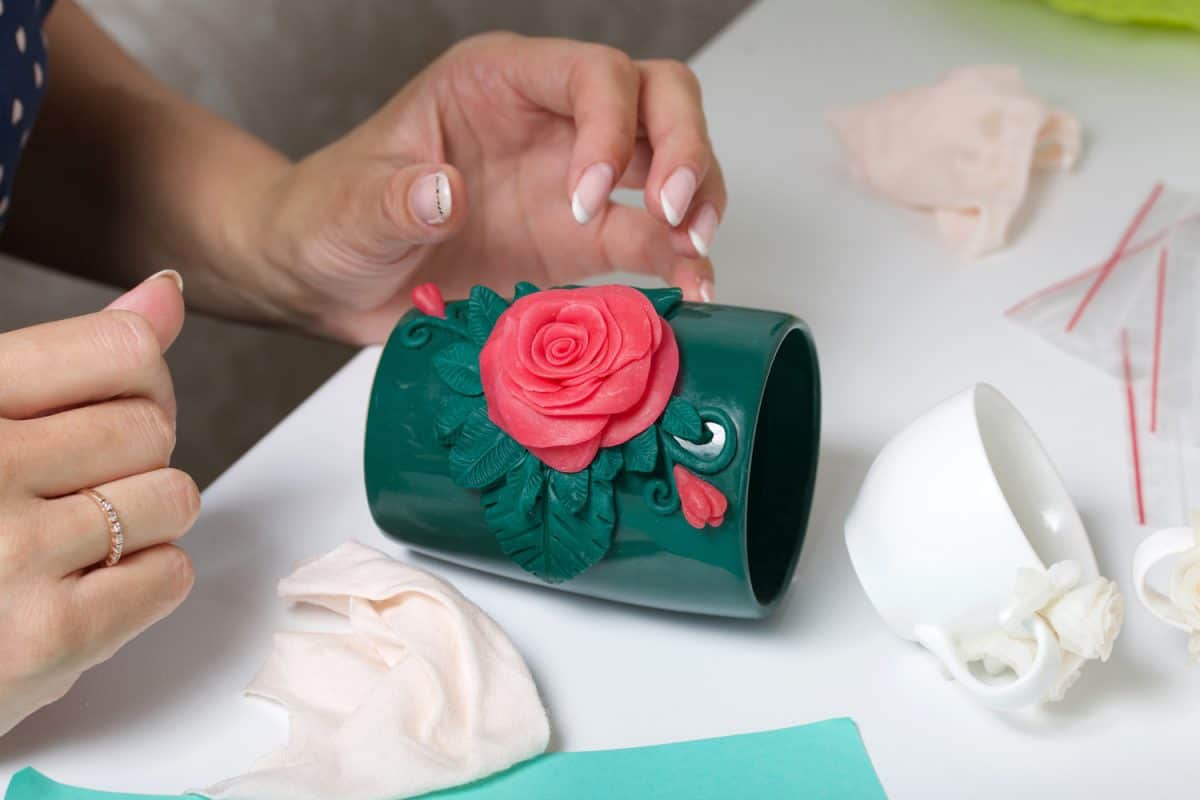
We talked about using baby powder already; you can use cornstarch in this same way. Simply apply a small amount to your finger and rub it on your project gently in a circular motion.
If you work with clay brands like Sculpey or Premo, you can use water to smooth out your project. Have a bowl of water beside you as you dip your fingers and run them over your clay.
Using this same motion but with a softener is great for clay brands like Cernit for smoothing out bumps and other imperfections.
Find 10 colors of Sculpey polymer clay here on Amazon.
Read more on our blog post, “Can You Sand Polymer Clay?”
How Do You Clean Polymer Clay After Baking?
Did you just get your clay project out of the oven and notice you missed a fingerprint? While it is more difficult to clean polymer clay or remove fingerprints after baking, it is not impossible.
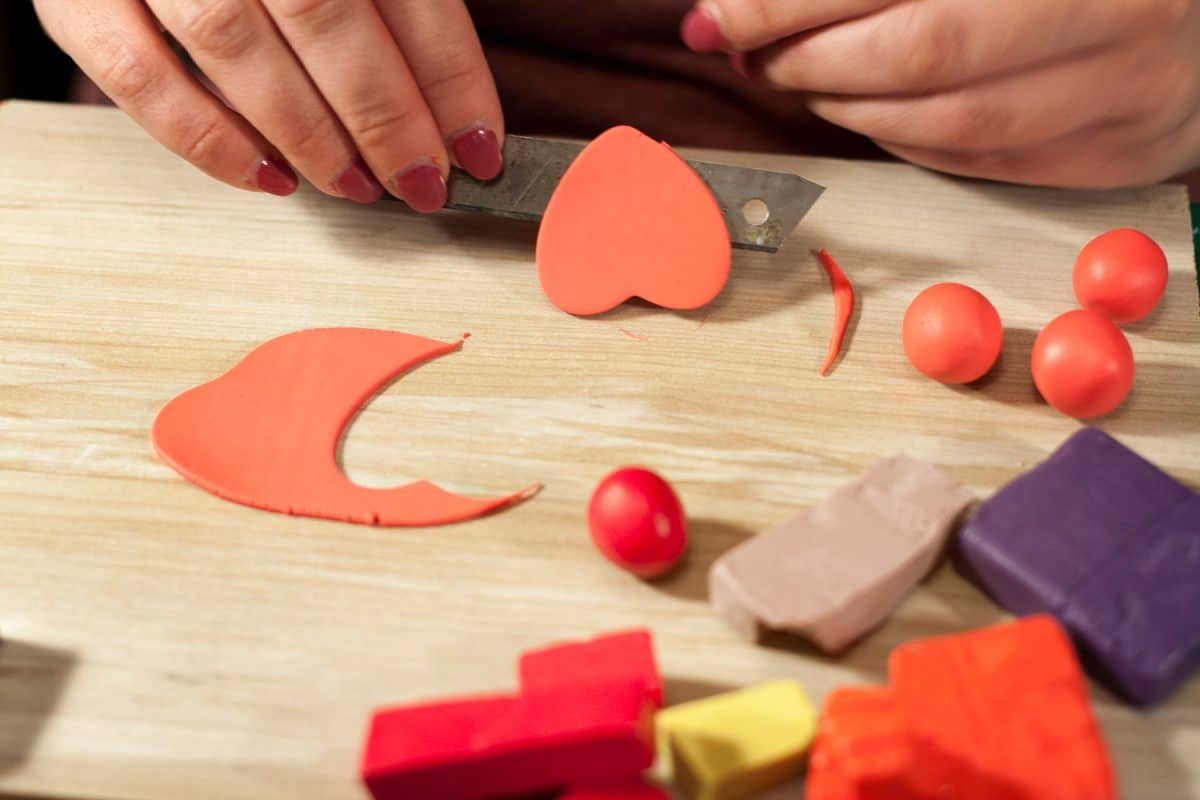
To remove fingerprints from or clean polymer clay after baking, you will use 100% acetone. Dip your cotton swab in acetone to ensure it is fully moistened but not dripping. Use your moist cotton swab to gently wipe the areas you want to clean.
Focus on careful, gentle movements. Applying too much pressure to your project using acetone may remove more than you anticipated.
Acetone has strong fumes and is highly flammable. You must use this solution with caution and only in well-ventilated areas. Keep acetone away from your eyes and skin by utilizing safety precautions, like wearing gloves and safety goggles.
The video below showcases how to use acetone on your polymer clay project:
Learn more on our blog post, “Polymer Clay Not Hard After Baking — What To Do?”
How To Buff Polymer Clay By Hand
Are you looking to keep chemicals out of your workspace? There are buffing methods to remove imperfections from polymer clay that do not include acetone or isopropyl alcohol. Buffing polymer clay by hand can be done with various grits of sandpaper and patience.
You can find a variety pack of sanding sheets here on Amazon.
Sand polymer clay using wet sandpaper. This will help keep scratches to a minimum and decreases the number of particles in the air. Start with coarse sandpaper and move your way to a higher grit for a smooth finish.

After you have finished sanding, use a cotton, denim, or silk cloth or a piece of paper to rub your clay item. The faster you rub, the more friction will be created, ultimately leading to a more polished clay piece.
What Do You Seal Polymer Clay With?
Sealing polymer clay can give you a unique finish by adding gloss, shine, or glitter to your project. The process of sealing adds flare and protects the color of your clay. So, what do you need to seal polymer clay?

There are many options to choose from, and the choice varies depending on what look you have in mind for your finished project. Sealants great for polymer clay include options like:
- Acrylic Sealer
- Liquid Epoxy
- Gloss Varnish
- Matte Varnish
- Wax
- Liquid Clay
- Resin
You can find an ultra-matte varnish here on Amazon.
Not every project gets a layer of sealant. Polymer clay is durable and water-resistant, making many crafters opt out of using a sealant. However, these products really do add another dimension to a project and can bring your final product to the next level. Enjoy a glossy, clear, matte, or domed appearance by using one of the sealants above.
Amazon offers a clear resin kit for sealing and coating here
Read more on our blog post, “Best Varnishes For Polymer Clay.”
Should I Wear Gloves When Using Polymer Clay?
You should wear gloves when working with polymer clay. The use of gloves will aid in preventing fingerprints, dirt, lint, and other particles that come from your hands from getting on your clay. Polymer clay can potentially cause irritation to the eyes and skin, making the added protection from gloves practical and useful.
Not every crafter wears gloves, as you may notice. The choice comes down to personal preference. When you choose not to wear gloves, take some extra measures to protect yourself and your clay.
Always wash your hands thoroughly before and after working with polymer clay, avoid touching your face or eyes after touching the clay, and use smoothing methods to get rid of fingerprints on your project before baking.
In Summary
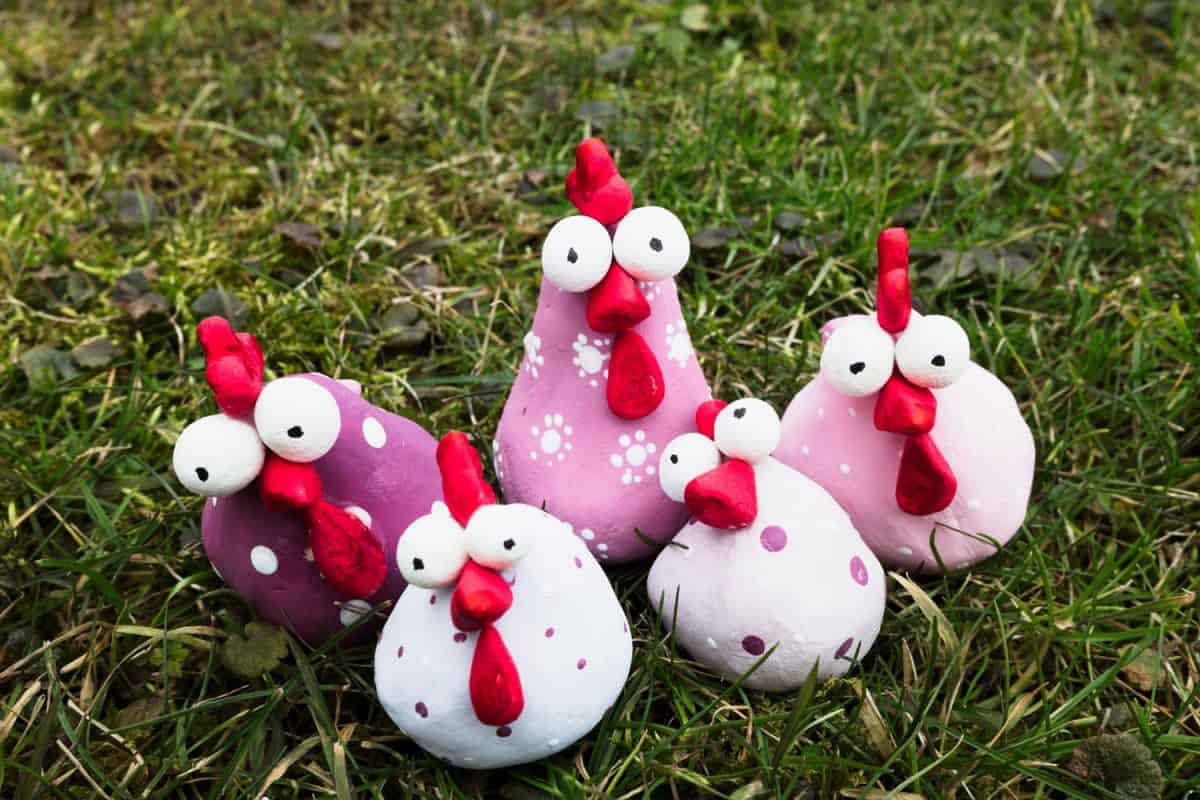
Removing fingerprints from clay can be done, and the difficulty of the task depends on if you remove them before or after baking. You can easily remove fingerprints before baking with the use of rubbing alcohol. After baking, you'll need a stronger agent, like acetone.
Play around with smoothing methods, sanding and buffing your project for the ultimate finish. We hope you found this article while removing fingerprints from your polymer clay project, and maybe consider utilizing gloves to avoid them in the first place. Happy crafting!
Are you looking for more inspiration when it comes to polymer clay? Have a look at our blog post, “21 Fantastic Polymer Clay Bead Ideas.”






![Read more about the article How To Drill Holes In Glass Beads [8 Steps To Follow]](https://craftsbliss.com/wp-content/uploads/2021/05/Heap-of-shining-transparent-multicolored-faceted-glass-beads-500x333.jpg)
![Read more about the article Can You Glue Fabric To Leather? [Products & Steps Included]](https://craftsbliss.com/wp-content/uploads/2023/01/In-workroom-girl-makes-purse-with-brushglueleather.-500x333.jpg)
